
Contents





Architect Who Seeks to Transform Life






Architect Who Seeks to Transform Life
Architecture Is Not For Yourself
Starting with Sujoldang in 1993, renowned Korean architect Seung Hchioh Sang has created a slew of architectural and space designs. He served as the city architect of Seoul Metropolitan Government from 2014-16 and was named this year chief commissioner of the President Commission on Architecture Policy; thus Seung is considered a true gem of the sector. Through his glasses, his sparkling yet soft eyes tell his story.
Written by Kim Samuel Photographed by Studio Kenn

Architecture Is Not Art
Seung Hchioh Sang had no specific reason to become an architect. He wanted to study theology in college, which his family strongly discouraged. His sister suggested that he study architecture, and this is how his journey in the field started. At school, he paid little to no attention in class but enjoyed studying alone. Seung told himself that since he had started studying architecture, he wanted to see what it was about. Since embarking on this decadeslong journey, he has sought to devise his own style of architecture. “When I was younger, I took part in a protest against the country’s dictatorship but this didn’t mean I could change the world. I did, however, find architecture valuable for changing society to a larger degree,” he said. “I clearly saw nothing better than architecture to realize the values I believe in.
Seung appreciates and values what architects do and likens their work like that of a priest. “While the world has changed a lot, a crisis is always looming. Society doesn’t advance on its own but simply changes. The responsibility of intellectuals is to guide society toward the right direction, and architecture should play a role in making the world better rather than just being beautiful art.” When he completed his first design project Masan Catholic Church in 1997, his work as an architect felt rewarding. “A factory worker with a sad face entered the church to pray and came back out at peace. It was an incredible experience to see the place I created change people’s minds,” he said.
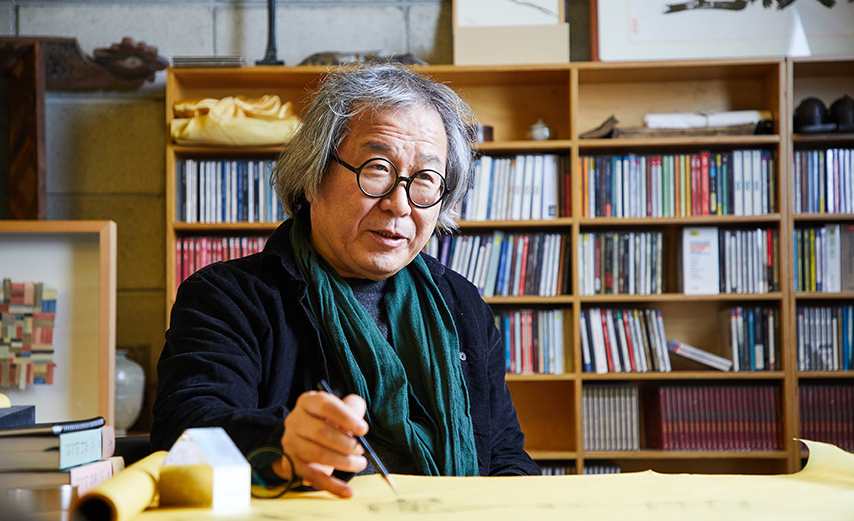 Seung doesn’t hesitate to answer any question with his philosophy and principles.
Seung doesn’t hesitate to answer any question with his philosophy and principles.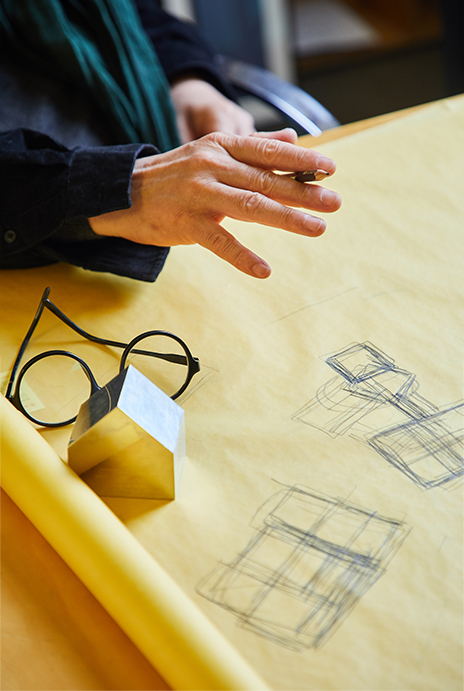 Seung highlights that every stroke on a blueprint takes deep contemplation.
Seung highlights that every stroke on a blueprint takes deep contemplation.A House Doesn’t Belong to the Owner
Seung requires a higher level of voluntary emptiness. “My clients pay whether they’re rich or not but it still means they can afford it. ‘Esthetics of the poor’ is a suggestive philosophy to the affluent: why not live with less? If they don’t like it, I can’t help it,” he said.
Those who want to build on the land they paid for often find it difficult to understand this concept. Things have improved since his ideas have spread throughout the world, but Seung said he occasionally got into intense arguments at times that alienated him from his clients due to his stubborn personality and refusal to abandon his philosophy. He said he still tries to explain the value of publicity to his clients. “What matters is the people who actually live in the building, not the ones who own them. When someone wants to build a 100-story building in between a group of 50-story buildings, I suggest that we go lower or provide space to take shelter from the rain.”
Making his own path through life, his architecture has found its voice in society. He never hesitated to communicate with people and convey a righteous voice to the world on his journey to coming the position to shape national policy toward architecture. “Architects shouldn’t be the subordinates of landlords; this is harmful to both landlords and architects. The ideal is to have both sides work toward the same vision,” he said. “If an architect creates an arbitrary design, it goes against the nature of the job of building other people’s houses and we can’t do it. We must constantly think about what is ideal, and every stroke on a blueprint has to be perfect for clients. As a house doesn’t belong to its landlord, an architect doesn’t own the home’s architecture.”
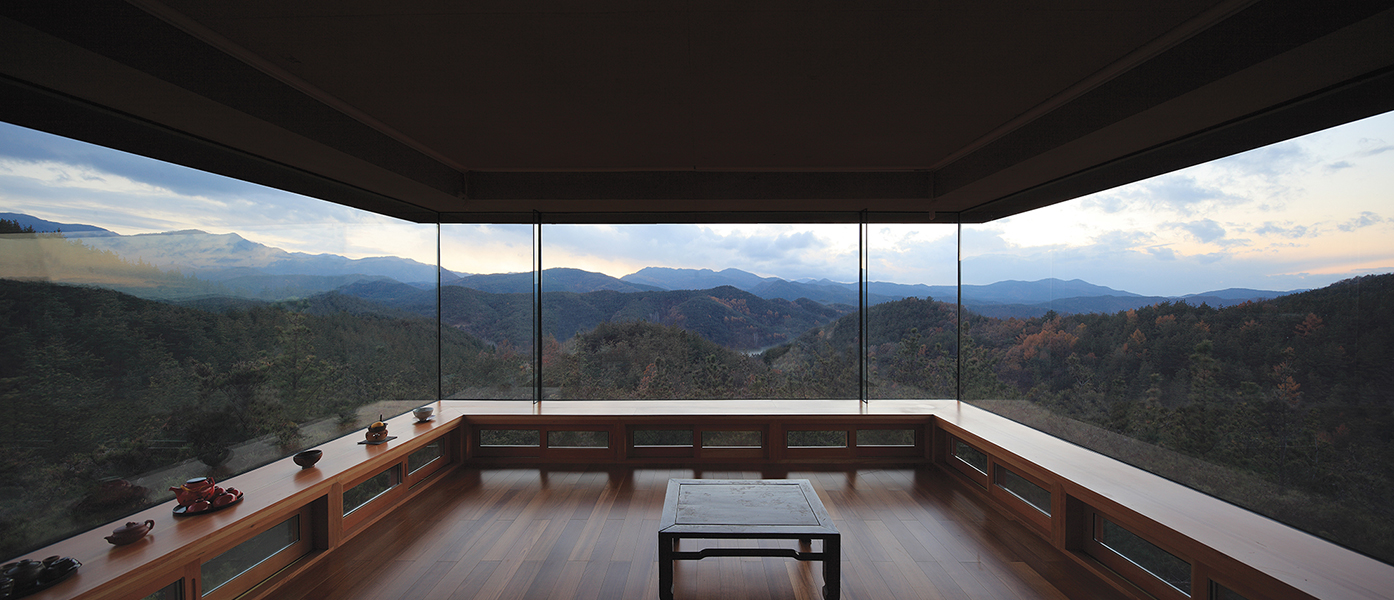 Saya Arboretum presents a panoramic view of the surroundings where the mountains and sky look so close. © IROJE architects & planners
Saya Arboretum presents a panoramic view of the surroundings where the mountains and sky look so close. © IROJE architects & plannersContemplation Is Essential to Life
Seung’s architecture is getting more mature. Getting off the ground with his first Sujoldang project, he also designed Daejeon University Hyewha Cultural Center and President Roh Moo-hyun Cemetery. Myeongrye Sacred Hill was also recently reborn with his hands. His principles are growing even deeper to another level of contemplation. “All graves are being pushed out of the city and corrupt religious institutions have become despicable. How to recover from this is the biggest question to me today.”
The simplicity highlighted in Seung’s architecture illustrates the fundamentals of its essence and people. Materials such as concrete, wood and weathering steel fade away and reflect the changing times and the lives of residents. He said his architecture strives to invite others to look themselves in the eyes.
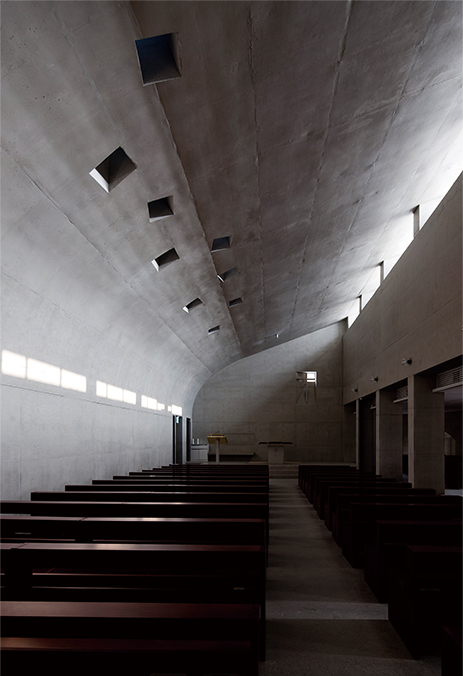 Commemorative Catholic Church of Shin Seok-bok inside the Myungrye Sacred Hill shows what the space works toward with slanted sun lighting through the windows.
Commemorative Catholic Church of Shin Seok-bok inside the Myungrye Sacred Hill shows what the space works toward with slanted sun lighting through the windows.© IROJE architects & planners
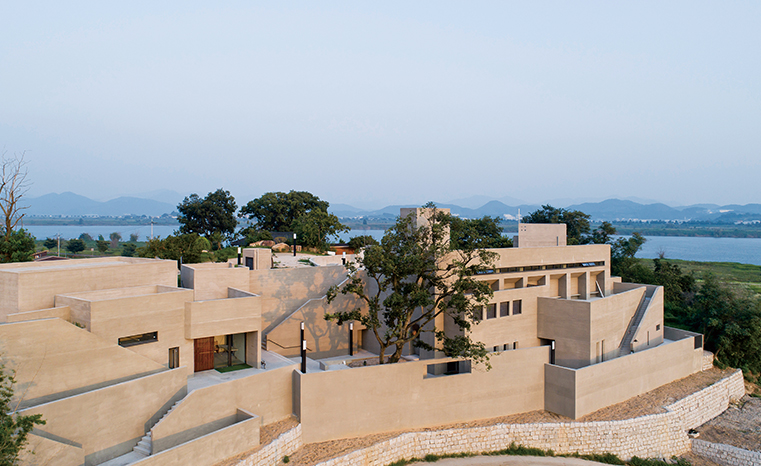 Myungrye Sacred Hill is located on a wide field of a slightly rising hill under the theme of “melting salt,” admiring the spirit of martyrdom.
Myungrye Sacred Hill is located on a wide field of a slightly rising hill under the theme of “melting salt,” admiring the spirit of martyrdom. © IROJE architects & planners
“What cities need are sacred places and empty spaces where people pass and straighten their clothes,” he said. “Graves are easily found in Korea’s neighbor Japan or even faraway Western countries, which lets people embrace the concept of death. It makes them think about how they want to live their lives. It doesn’t necessarily have to be graves but any divine places nearby will get people to reflect on life.”
On if he had any message to aspiring architects, Seung said he wants to give genuine advice as a person rather than secrets. “You have to live with resentment. Your anger prevents corruption when you can handle it. If you don’t have that in your heart, you’ll end up corrupt. I resented the military dictatorship in college, but I now resent the brute force of bourgeois capitalism or those who harm community values,” he said. “Everyone should have something that makes them resentful and passionate. The next step is to observe yourself. Read anything, from novels to philosophy or history books. And you can objectively observe yourself. This enables you to do architecture. Architecture is not for yourself.”
 The materials used to build Welcome City wear down over time and show the changing rusty color. This serves to embrace the ever-changing surrounding environment. © IROJE architects & planners
The materials used to build Welcome City wear down over time and show the changing rusty color. This serves to embrace the ever-changing surrounding environment. © IROJE architects & planners
-
Seung Hchioh Sang Profile
Company
 1989Founded IROJE
1989Founded IROJEMajor Projects
 1993Sujoldang
1993Sujoldang 2008Daejeon University’s 30th Anniversary Hall
2008Daejeon University’s 30th Anniversary Hall 2009President Roh Moo-hyun Cemetery
2009President Roh Moo-hyun Cemetery 2018Myeongrye Sacred Hill
2018Myeongrye Sacred HillBooks
 1996“Esthetics of the Poor”
1996“Esthetics of the Poor” 1999“City of Wisdom, Architecture of Wisdom”
1999“City of Wisdom, Architecture of Wisdom” 2012“Beautiful Things from Old Times”
2012“Beautiful Things from Old Times”Awards
 1997Grand Prize at Korean Architecture Awards
1997Grand Prize at Korean Architecture Awards 2002Honorary Prize at American Institute of Architects
2002Honorary Prize at American Institute of Architects 2007Prize at Korea Arts & Culture Awards
2007Prize at Korea Arts & Culture AwardsEducation
 1971 to 75Seoul National University
1971 to 75Seoul National University 1980 to 81Vienna University of Technology
1980 to 81Vienna University of Technology
Other Articles





Architect Who Seeks to Transform Life





Application of subscription
Sign upReaders’ Comments
GoThe event winners
Go


 January 2019
January 2019



